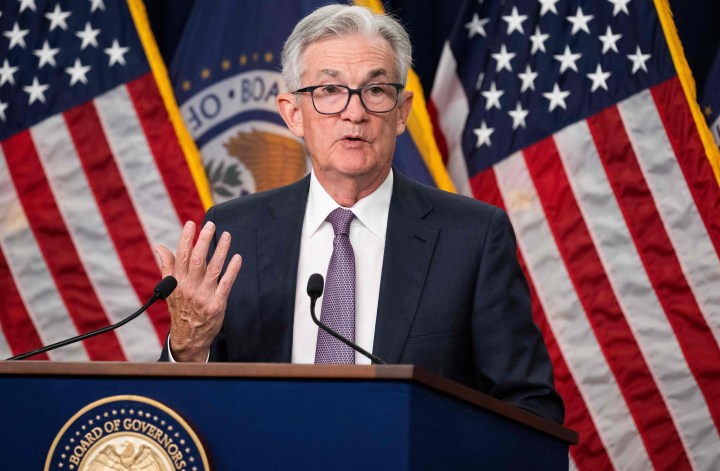
The ups and downs of Treasury yields
Share Now on:
The ups and downs of Treasury yields

With the Federal Reserve raising interest rates aggressively — hiking them three-quarters of a percentage point Wednesday — the yield on the 2-year Treasury note has surpassed 4% for the first time since 2007. Meanwhile, the yield on the 10-year note has hit 3.53%, also reaching a high it hasn’t seen in more than a decade.
One effect of higher yields on government debt is that corporations pay higher rates on their debt as well. That typically leads to slower hiring — which the Fed seems to be aiming for in its effort to cool inflation.
Kevin Maloney, a finance professor at Bryant University, explained that the 2-year note “reflects current Fed policy and expectations about where Fed policy is going.”
“The interest rate that the Fed pushes up is a very short-term interest rate, the only thing that they can control,” Maloney said. “Nobody is gonna lend money for two years unless they get compensated enough for doing so.”
To some extent, the 10-year note also reflects expectations of Fed policy, but the connection is much less certain. Nobody can predict with certainty what will happen to inflation and other economic conditions in the next decade.
The yield curve shows the “relationship between short- and long-term yields,” as Marketplace has reported. Because investing in a debt security for a longer period involves more risk, the yield on longer-term bonds will typically be higher than on shorter-term bonds.
But when the curve is “inverted,” which is what we’re seeing right now, it’s the reverse.
The high short-term rates reflect “that the market presumes that the Fed is going to keep pushing interest rates up for a while, [and] inflation is going to come down because of that,” Maloney said.
“There’s a reasonably high chance that we’re gonna have a recession. And then the Fed will have to reverse course and bring it straight back down,” he added.
Maloney noted that an inverted yield curve does not directly predict a recession.
“What it does is it predicts that rates are going to come down in the future. That usually happens during recessions. That’s the link.”
Right now, bond valuations are on the decline, with the return for the S&P U.S. Aggregate Bond Index down 12.9% year over year. Bonds are supposed to provide protection against a falling stock market, but we’re in an environment where rates are going up, Maloney said.
That dents the value of bonds that were issued earlier and have lower yields.
Why? You can sell your bond on the secondary market, before it reaches maturity. In a time of rising yields, an older bond with a lower yield will be worth less to a potential buyer. Conversely, if interest rates are going down, your older bond, with its higher interest rate, would be more valuable.
But no matter what, if you hold a Treasury bond (or note, or bill) to maturity, you will get the full value back along with the yield.
With yields rising across the board, Maloney said we’re almost at the point where it makes sense to invest more in bonds.
“I don’t know that we’re quite there. I think we need to get through the next two Fed meetings,” Maloney said. “They’re certainly more attractive than they were two years ago, that’s for sure.”
Those meetings, when the central bank normally updates its interest rate policy, are scheduled for early November and mid-December.
But while investors can now earn 4% on the 2-year note, inflation is at a multidecade high, which means the return you receive on the note buys you less, Maloney pointed out.
“The cons are that if inflation doesn’t come down, then you’re giving up purchasing power,” he said.
Let’s say 2-year Treasuries are part of your retirement portfolio. If you only earn 4% annually on them, but inflation averages 5% over the next two years, the returns aren’t great for you, Maloney observed. If inflation averages 4%, you would break even in regard to the cost of living.
Maybe that’s not so bad, Maloney said, because government debt provides safety in a volatile environment. “Because Treasuries don’t have any credit risk, there’s no real risk of losing principal in the Treasury security,” Maloney said.
That’s unlike stocks, which have been a good place to lose money recently. The S&P 500 is down nearly 21% year over year.
Saving accounts, typically covered by FDIC deposit insurance, are also considered safe, but yields are lower than what bonds offer.
Keeping your money in bank accounts is a good idea if it’s part of an emergency fund or you have short-term goals and expenses. But according to Ken Tumin, senior industry analyst at LendingTree and founder of DepositAccounts.com, consumers should consider investing in mutual and exchange-traded funds to meet their long-term financial objectives.
There’s a lot happening in the world. Through it all, Marketplace is here for you.
You rely on Marketplace to break down the world’s events and tell you how it affects you in a fact-based, approachable way. We rely on your financial support to keep making that possible.
Your donation today powers the independent journalism that you rely on. For just $5/month, you can help sustain Marketplace so we can keep reporting on the things that matter to you.












